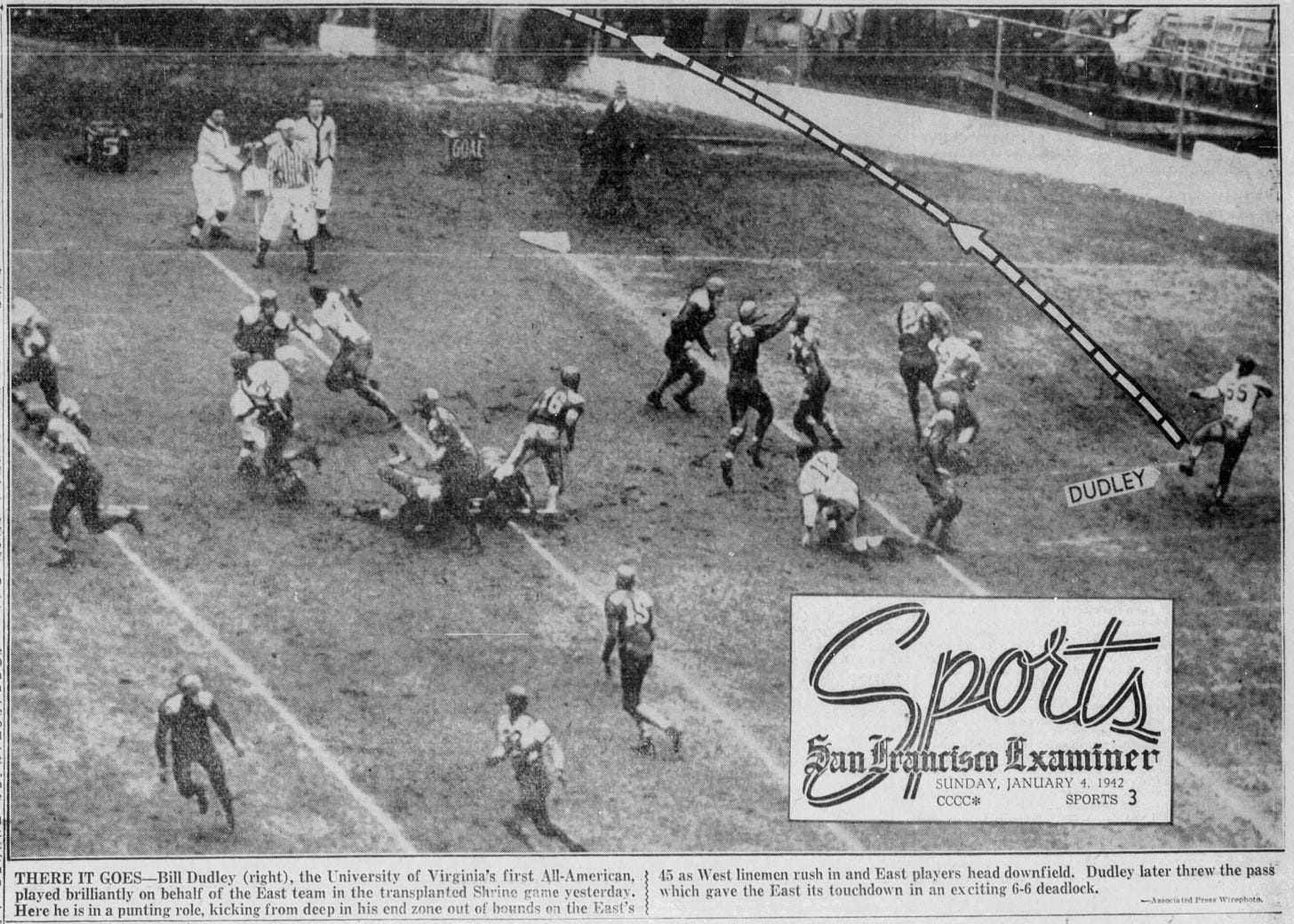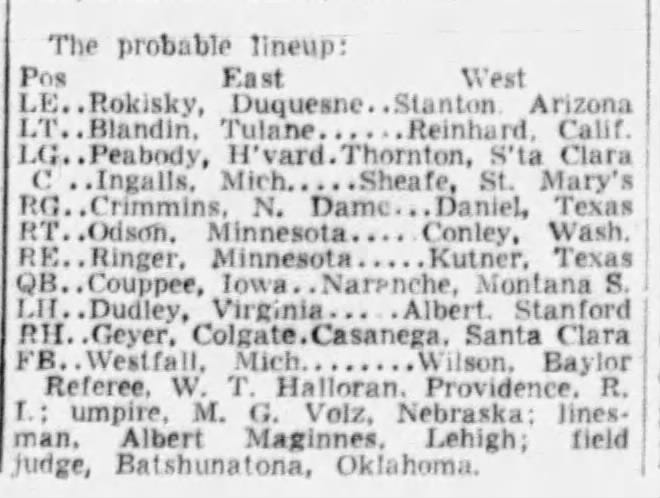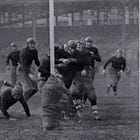Today's Tidbit... Moving The 1942 East-West Shrine Game
Most everyone that follows football history is aware that the 1942 Rose Bowl moved to Durham, North Carolina, due to concern the Japanese might follow the attack on Pearl Harbor attack with one on Pasadena when 92,000 Americans planned to gather for a football game. Less recognized are the parallel transfers of the East-West Shrine Bowl from San Francisco's Kezar Stadium to Tulane Stadium in New Orleans and the shift of the Pro Bowl from the Los Angeles Coliseum to New York’s Polo Grounds.
The first East-West Shrine game came in 1925. Besides acting as a fundraiser for San Francisco's Shriners Hospital, it was the only 1920s startup among bowl games to survive the decade. It proved to be great entertainment and benefited NFL teams looking to scout top talent in the days before the widespread availability of game films, to say nothing of television and combines.
The East and West coaching staffs were responsible for recruiting their 22-man rosters and had the additional task of ensuring the logistics made sense when the game’s location switched shortly before the teams reported. Things worked out as the East team prepared at Ole Miss and the West at LSU for a contest in which the East team generally had more All-Americans while the West often won the game.
As was the nature of the time, the expected East starters included players from Duquesne, Harvard, and Colgate. At the same time, the West had gents from Santa Clara (two of those) and Montana State, in addition to the usual cast of major conference players.
Unfortunately for football fans in Louisiana, it began raining when New Orleans approached the new year. At the same time, the temperature dropped into the thirties, contributing to Fordham beating Missouri 2-0 in the Orange Bowl on New Year's Day. The five turnovers for each team produced a 6-6 tie in the Shrine game.

All was not lost. Thirty-five thousand fans showed up for the game, with the proceeds split between the Shriner's Hospitals in San Francisco and Shreveport. Meanwhile, most of the good folks in San Francisco chose not to seek refunds for their unused tickets, so those monies went to the hospital in San Francisco as usual.
Following up on the caption above, below are articles about the visual demarcation of the goal line that arrived when the goal posts moved to the end line in 1927 and regional variations in officials’ uniforms that continued into the 1960s.
Football Archaeology is reader-supported. Click here to buy one of my books or otherwise support the site.





